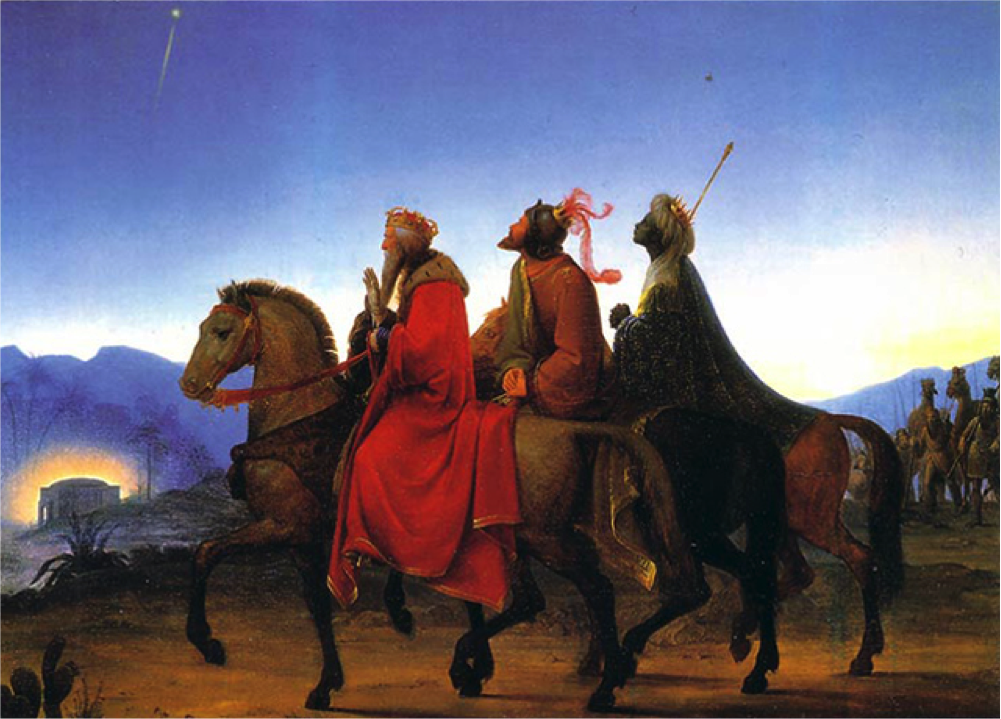
Art by Leopold Kupelwieser
Before December 25 was designated as the birth of Christ in the 4th century by the Western Church – January 6 was the date used for celebrating Christmas and is the date still celebrated by the Eastern Christian Church.
When the Western Christian Church adopted December 25 it gave rise to the tradition of the “12 Days of Christmas” that ends on January 6.
The traditional story (most likely adapted from an older tradition) features Three Kings, Three Wise Men or Three Magi (Caspar, Melchior and Balthasar) following the star to Bethlehem bringing gifts of gold, frankincense and myrrh to the Christ child.
Syrian tradition lists the Magi Larvandad, Hormisdas, and Gushnasaph. Armenian tradition, lists the magi as Kagba, Badadakharida, and Badadilma.
However, older versions of the story didn’t always represent three Magi. In the Orient there were 12 Magi. Early Christian art also shows different numbers of Magi, including a painting from the cemetery of Saint Peter and Saint Marcellinus, where only two Magi are shown. A painting in the Lateran Museum, shows three magi, but another painting in the cemetery of Domitilla shows four. Eight Magi are depicted on a vase in the Kircher Museum.
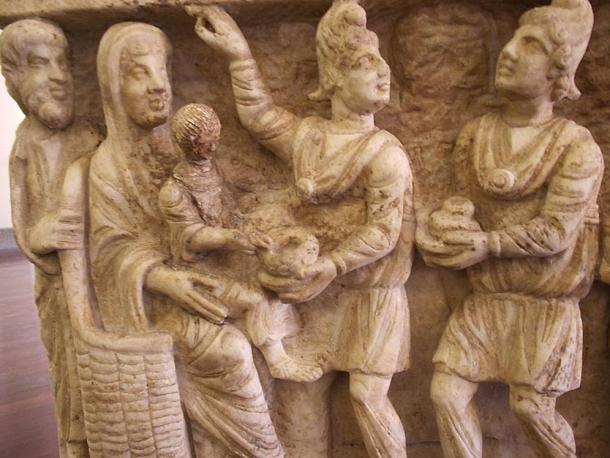
3rd Century Sarcophagus depicting only two magi bringing gifts. Vatican Museum, Rome, Italy.
The Three most recognized Magi
Caspar (or Gaspar) the King of Sheba (Persia), brought Frankincense to the Christ child. He is noted for having brown hair and a brown beard (or no beard). Some versions of the story say he wore a green cloak and a gold crown with green (emerald) jewels on it.
Melchior, the King of Arabia, brought Gold. He had long white hair, a white beard and wore a gold cloak.
Balthazar, King of Egypt (some say Babylonia), brought Myrrh. He had black skin and a black beard (or no beard) and a purple cloak.
*(See more below on St Helena and the relics of the Magi)
Traditional Celebration of Epiphany
On the day before Epiphany (January 6), prayers were recited for protection from the dangers of fire and water, dried herbs were burned (similar to the common practice of burning sage to clear the energy) and holy water was sprinkled on the doorways.
Some would write the number of the year and the letters C + M + B on the door of their house and barn. These letters are thought to stand for Caspar, Melchior, and Balthasar. Some believe that C + M + B actually stands for “Christus Mansionem Benedictat” (Christ bless this home).
The word epiphany covers a range of meanings including:
- an intuitive grasp of reality
- an illuminating discovery
- realization, disclosure, or insight
- an experience of great revelation (often unexpected) dramatically changing your perspective
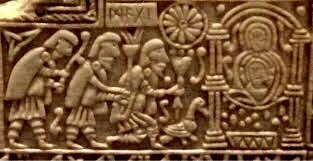 Shown in image to the right – are the Three Kings, from an early 8th-century carved whalebone Franks Casket (pictured below).
Shown in image to the right – are the Three Kings, from an early 8th-century carved whalebone Franks Casket (pictured below).
A duck leads the way, the star is a wheel and the runes spell MAGI.
Franks Casket (or the Auzon Casket) is a small Anglo-Saxon whale bone chest from the early 8th century, now in the British Museum.
Are you open to receiving your own Epiphany? Intention and attention are the most basic elements needed to create magic and an epiphany certainly qualifies as a magical experience. Remember the root word of Magic is Magi.
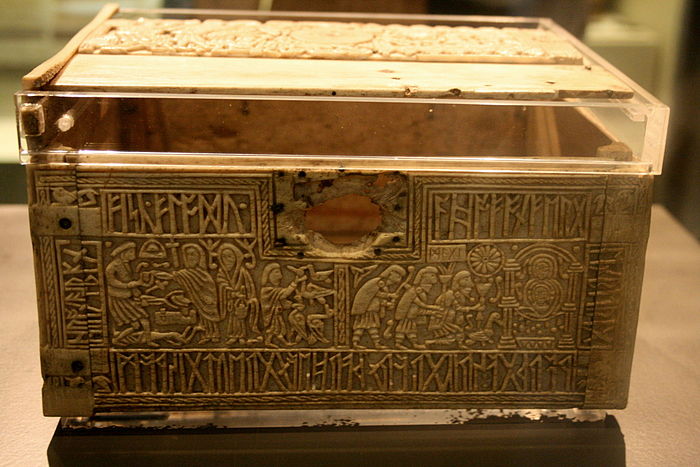
Here is Franks Casket

St. Helena of Constantinople
*During the 4th century AD, St. Helena, mother of the Roman emperor Constantine, undertook a quest to find the sacred relics of the Magi. Some say St. Helena succeeded in finding their remains in Persia bringing them to Constantinople. During the 5th century AD, these relics of the Magi were brought to Milan.
In 1164 Constantiople was conquered by Frederick Barbarossa, the Holy Roman Emperor in 1164. The sacred relics were given to Rainald von Dassel, the Archbishop of Cologne. Later the remains of the Magi were taken to Cologne Cathedral, featured being the high altar pictured below.
A gold sarcophagus houses their remains. This reliquary (container for holy relics) is called the Shrine of the Three Kings and is thought to be the largest reliquary in the Western world, drawing pilgrims to Cologne Cathedral since these supposed remains of the Magi arrived in the city during the 12th century.
References
The Bible: Standard King James Version, 2014.
http://www.kingjamesbibleonline.org/christianity.about.com, 2015.
Three Kings – Wise Men from the East
http://christianity.about.com/od/newtestamentpeople/a/Three-Kings.htm
Drum, W., 1910. Magi
http://www.newadvent.org/cathen/09527a.htm
Sacred Destinations, 2015. Cologne Cathedral
http://www.sacred-destinations.com/germany/cologne-cathedral
The Cologne Cathedral
http://www.cologne.de/what-to-do/the-cologne-cathedral.html
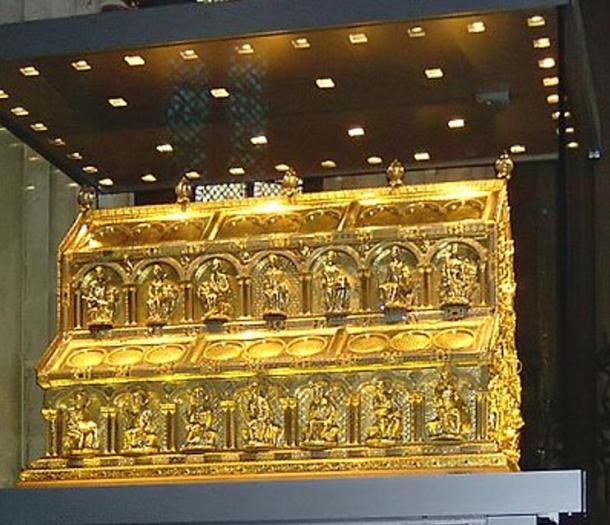
Shrine of the Three Kings, Cologne Cathedral, Germany
